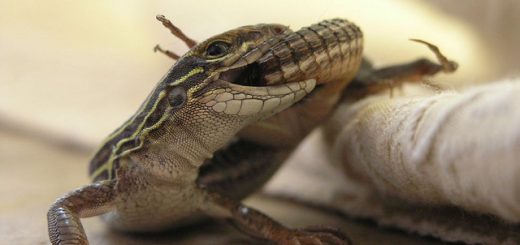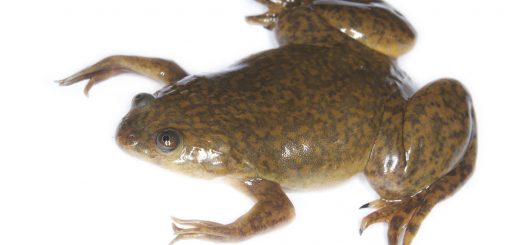The cues of cryptic selection: Do fat bottoms make the rocking world go round?
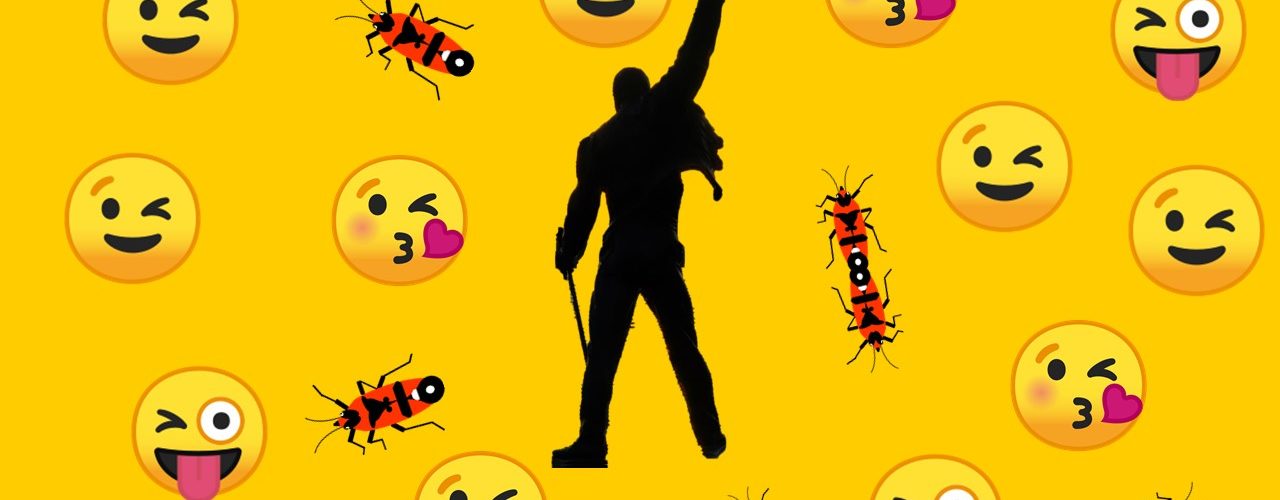
Freddie Mercury once sang out “Fat bottomed girls, they make the rocking world go round” and the crowd roared in agreement. Since then, voluptuous women took over the world; icons including the bootylicious Beyonce, J-Lo and Iggy Azalea. But why are we so attracted to big butts? Research into female morphology has shown that among humans, a woman’s curves act as a “cue”, distinguishing her from other potential mates and making her more desirable. However, it may not be the booty that is attractive but rather the curve of the spine, which can make it appear that there is a more pronounced shape to the behind.
A low waist to hip ratio has been found to correlate with better health, favourable balances of hormones involved in fertility and increased overall reproductive success1. We might not be aware of why we like certain body shapes, but these cues can provide information about the quality of a potential mate, thereby influencing the choices we make in a partner.
Sexual selection: Get busy
Most animals choose a mate based on appearance or how they behave. This process of competing for mates results in sexual selection, which is the evolution of a species specifically linked to getting more mating opportunities and passing on genetic information2. How these cues influence the evolution of sexual choice is shown below.
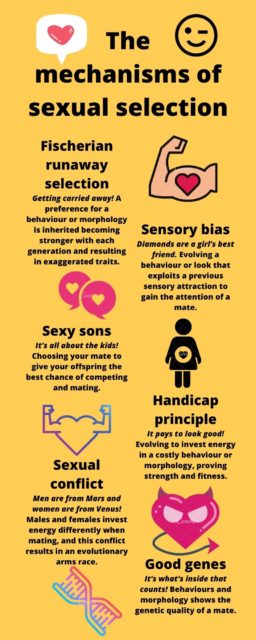
Choosing a mate based on these mechanisms has resulted in some extreme examples for what could be considered as “sexy”: male satin bower birds (Ptilonorhynchus violaceus) create intricate nests out of twigs and decorate them with bright blue objects – exploiting the females’ sensory bias and winning a mate over with this attractive interior design3. Female fiddler crabs (Uca perplexa) choose males based on the size of their claw: the bigger the better. Although having a bigger claw might help when finding a partner, it also costs more energy to lug around and can be a handicap when escaping predators or during strenuous activity4. Apparently a lot of animals think that size is everything, including stalk-eyed flies (Diopsidae) who – you guessed it – have eyes that extend out on huge stalks. Bigger stalks are both better for fighting and more attractive to potential mates, showing that the male is strong and possesses good genes5.
Cryptic selection: Can you feel the love tonight?
Most animals will assess their partner before deciding to mate with them so they can ensure they have the best available. When that is impossible, they will make an assessment during mating known as post-copulatory choice or cryptic selection6 7. Cryptic choice often involves choosing a mate based on non-visible cues, like the size of an individual which is commonly linked with their fertility. When assessing the quality of a mate, male insects may rock the female or run his antenna over her before either continuing to mate or deciding to leave (without calling). Like pre-copulatory sexual selection, the evolutionary consequences of this process can result in extreme morphologies, including a complex array of insect genitalia displaying claspers, spikes, and sperm storage devices used to compete for mates.
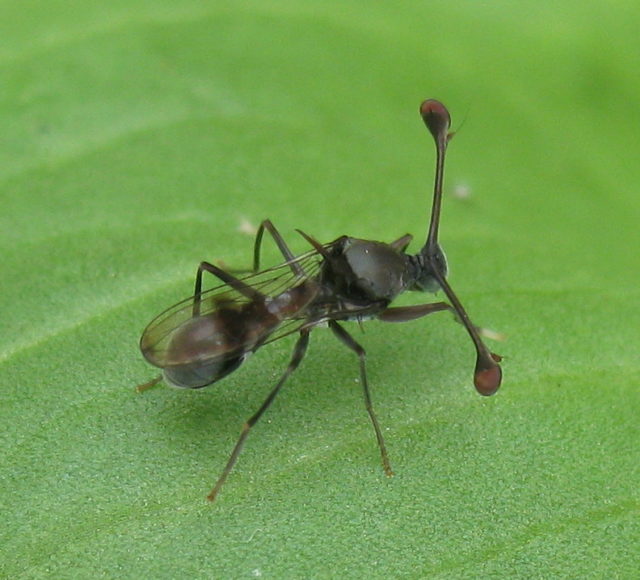
Seed bugs: Make you feel my love
Lygaeus simulans bugs show no obvious behaviours or morphology used in mate choice. They also exhibit extremely high rates of mate failure, up to 60%, and have complex genitalia, all of which indicate that this species chooses mates through cryptic selection8. It is still unknown how mating pairs choose whether or not to “go all the way”, or call it a night without committing. We cannot even determine if it is the male or the female bug that makes the choice. But recently, a discovery was made which gave new information to this puzzling case of cryptic selection.
While handling the bugs as part of the Shuker Lab research group at the University of St Andrews, we discovered that the females’ rear end was protruding. Furthermore, we found that their butts extended to different lengths, depending on the girth of the females (you can see this protrusion circled in Figure 3). This discovery resulted in some novel ideas about cryptic selection in these bugs: maybe males were using the size of the extending rear end to decide whether or not to mate with the female? Maybe it was a way for females to entice males or to prevent them from mating?
If I back it up, is it fat enough?
The size of the female’s extended behind was found to be positively correlated to the number of eggs she was carrying. The more eggs she produced and held, the more her end would extend – and if she laid her eggs, her behind would retreat. This effect could be induced by injecting the females with saline and was not controlled by behaviour but a build-up of pressure caused by the eggs. We are now exploring how genitalia length and width might influence mating behaviour.
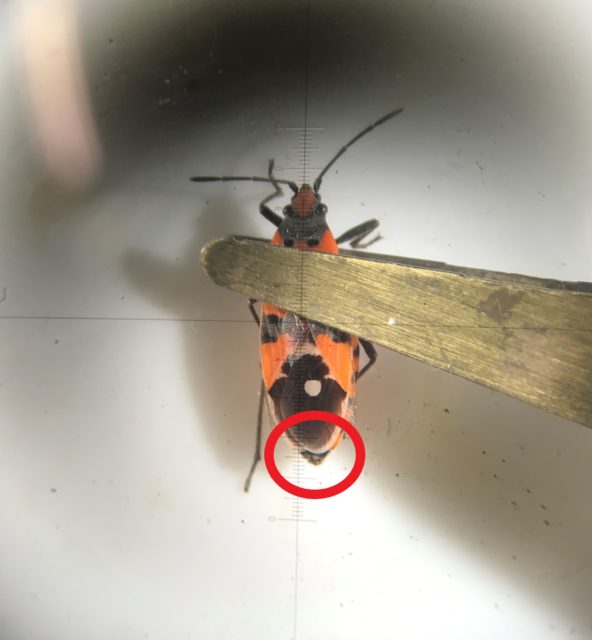
The change in the size of the females behind may make it harder for the males to mate with her. Males of this species have very long, very thin and very intricate penises. The pressure build-up from carrying a full clutch of eggs extends the female genitalia, in turn straightening her internal channels and making it easier to successfully mate. As it is a visual signal, it may also indicate how easy she is to mate with and be used to avoid unnecessary mating attempts which waste energy and may damage the female’s body.
Males might also use the size of the female’s posterior to determine how many eggs she is carrying. Mating with a female who is carrying a lot of eggs would be an attractive prospect; there are more eggs to fertilise and many insects have high rates of last male precedence. Last male precedence refers to when the last male to mate fertilises a disproportionately large amount of the clutch – 90% in the case of some seed bug species. This is similar to humans choosing a mate based on the size of her butt, it is used as a cue which indicates some other biological factor that makes her more appealing. For humans, it demonstrates the ability to survive pregnancy; for seed bugs, it indicates how many eggs she has and how soon she will lay them.
It is possible that female genitalia and size has no influence on mating behaviour and choice at all. In this case, it will confirm that these seed bugs only choose a female once they have started mating, through cryptic mate choice. The change in female size is due to an accumulation of eggs which is only possible due to the female’s soft abdomen stretching to hold a full clutch. There have been no other mentions of this kind of cyclical morphological change in insects that influences mating, but it is unlikely that this is the only case. We are all aware of the cyclical changes in other animals due to egg accumulation that affects mating behaviour. The timing of these changes can range from one week, for these seed bugs and a month for humans – and all of this occurs before the eggs are even fertilised!
Some animals use cues to decide who they are going to mate with. These attractive attributes have hidden meanings; looking good and displaying important information which is consciously or subconsciously used to select your mate. Seed bugs have such a cue – their extended genitalia is actually indicating how many eggs they are carrying and therefore how soon they are going to lay their eggs.
This article was specialist edited by Lizzy Cairns and copy-edited by Dzachary Zainudden.
References
- www.psychologytoday.com/us/blog/beastly-behavior/201706/the-relationship-between-waist-hip-ratio-and-fertility
- www.nature.com/scitable/knowledge/library/sexual-selection-13255240/
- www.birdwatchingdaily.com/news/science/male-satin-bowerbirds-skills/
- www.cell.com/current-biology/pdf/S0960-9822(06)01015-3.pdf
- www.cell.com/current-biology/pdf/S0960-9822(05)00754-2.pdf
- www.bangscience.org/2013/01/cryptic-female-choice/
- www.cell.com/current-biology/pdf/S0960-9822(18)31001-7.pdf
- www.cell.com/current-biology/pdf/S0960-9822(15)00227-4.pdf

